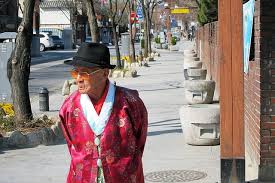South Korea is undergoing a significant demographic shift, characterized by a rapidly aging population and a declining birth rate. As a result, the country is witnessing a notable change in its care facilities. The number of child care centers has decreased substantially, reflecting the government’s unsuccessful efforts to encourage couples to have more children. On the other hand, the number of elderly care facilities, including senior care homes, specialized hospitals, and welfare agencies, has experienced a significant increase. This article delves into the reasons behind these changes and their implications for South Korean society.

source: dw
A Demographic Challenge
South Korea is grappling with the dual challenge of having one of the world’s fastest aging populations and the world’s lowest birth rate. Despite the government’s implementation of various measures, such as financial incentives and housing subsidies, to encourage couples to have more children, the birth rate has continued to decline since 2015. Experts attribute this trend to a variety of factors, including demanding work cultures, stagnant wages, rising living costs, the financial burden of raising children, shifting attitudes toward marriage and gender equality, and a growing sense of disillusionment among younger generations.
The Decline of Child Care Centers
The shrinking number of child care facilities in South Korea reflects the government’s struggle to reverse the declining birth rate. In just a few years, the country has witnessed a decrease of nearly a quarter in the number of child care centers. In 2017, there were over 40,000 such facilities, but by the end of 2022, this number had dropped to approximately 30,900. This reduction in child care centers has had a significant impact on the social fabric and daily life in South Korea. Many schools are closing due to a lack of school-age children, leading to abandoned buildings that serve as a reminder of the demographic challenges the country faces.

source: silvereco.org
The Rise of Elderly Care Facilities
In contrast to the decline in child care centers, the number of elderly care facilities in South Korea has witnessed a significant increase. From 76,000 in 2017, the number of such facilities rose to 89,643 in 2022. These facilities cater to the growing demand for senior services in the country, but they also highlight the strain faced by a system that is struggling to keep pace with the needs of an aging population. South Korea has the highest elderly poverty rate among OECD nations, with more than 40% of people over 65 years old facing relative poverty. Factors such as an underdeveloped pension system, global economic trends, breakdown of traditional social structures, and insufficient government support have contributed to this issue.
Long-Term Concerns and Implications
While the increase in elderly care facilities may alleviate some immediate problems, South Korea faces long-term concerns about the sustainability of its economy. With a dwindling number of young workers, who play a crucial role in supporting healthcare and pension systems, the country must find innovative solutions to ensure the well-being of its aging population. The challenges posed by an aging society require comprehensive policies that address healthcare, pension systems, and social support networks.
South Korea’s changing care facilities reflect the country’s struggle to address the challenges posed by its rapidly aging population and declining birth rate. The decrease in child care centers and the increase in elderly care facilities underscore the need for a comprehensive approach to tackle the social, economic, and demographic implications of these changes. The South Korean government must continue to explore policies that address the root causes of low birth rates and provide adequate support for its aging population, ensuring the well-being and sustainability of the country in the face of demographic transformation.












